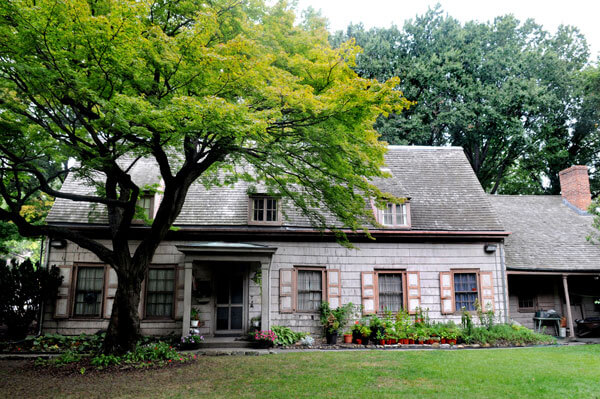By Joe Anuta
Flushing’s Bowne House is already one of the most significant historical sites in the city, but crews restoring the 17th-century building recently peeled back the outside wall to reveal further clues to the area’s rich colonial history.
The city Parks Department is leading an effort to refurbish much of the exterior of the home, according to Rosemary Vietor, vice president of The Bowne House Historical Society. The residence was built by John Bowne, a Flushing denizen whose ideals of religious freedom eventually contributed to the Bill of Rights.
To preserve his home, which housed nine generations of his family, contractors have carefully removed many of the windows, doors and sections of the exterior wall to be replaced, and will eventually reconstruct the entire roof.
The original portion of the residence was built in 1660, and siding that was recently pulled off exposed sturdy oak beams that the society believes were cut down nearby.
In 1669, an additional room was added onto the house, but oddly enough, when crews removed the siding there they found an inferior type of wood, according to Vietor.
“The theory is, between 1660 and 1669, all the original forests in the area that were available were felled,” she said.
A significant event transpired in the interim.
In 1664, the British sailed to what was then New Amsterdam, under control of Gov. Peter Stuyvesant and the Dutch crown, and took the city without a battle. In newly christened New York, oak trees that might have otherwise supported the Bowne House addition were off limits to all but one person.
“All of the timber was declared the property of the king. The better timber was cut and taken to England, where they used it for ship masts,” Vietor said. “So there is a difference in the size and quality of the wood just nine years apart.”
In yet another discovery, restoration crews uncovered a cistern beneath the floorboards of the laundry room, which was originally used to store potable water.
But as a general trend, when other sources of drinking water became available throughout the years, cisterns largely became dumping grounds for what residents at the time considered junk.
Archeologists today think otherwise.
The crew that stumbled upon the subterranean cavity found blue and white Chinese porcelain that may have been some of the earliest of its kind imported into the country, eyeglasses and a pocket watch, among a trove of other items.
Recounting the bureaucratic restoration process of the house is a history lesson in itself. Various city and state agencies began planning and signing off on the delicate upgrade more than six years ago, and most of the funding came from politicians now out of office, with the exception of Borough President Helen Marshall and then-City Councilman John Liu, now the city comptroller.
The society hopes the cultural gem will be back open to the public — it can still be seen by appointment — in spring 2014.
But as the current undertaking has shown, this 350-year-old house is still full of surprises.
Reach reporter Joe Anuta by e-mail at januta@cnglocal.com or by phone at 718-260-4566.



































